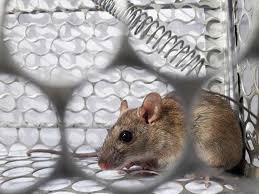Many are scrambling to the internet in search of knowledge about hantavirus following the death of a man from China’s Yunnan province.
On Monday, the man tested positive for hantavirus and China’s Global Times tweeted that the man from Yunnan Province kicked the bucket while on his way back to Shandong Province.
What is hantavirus?
The first thing you need to know is that it is caused by rodents. The Centre for Disease Control says that the virus is spread mainly from rodents.
The CDC says
“Hantaviruses are a family of viruses spread mainly by rodents and can cause varied disease syndromes in people worldwide. Each hantavirus serotype has a specific rodent host species and is spread to people via aerosolized virus that is shed in urine, feces, and saliva, and less frequently by a bite from an infected host. The most important hantavirus in the United States that can cause HPS is theSin Nombre virus, spread by the deer mouse.
“Hantaviruses in the Americas are known as “New World” hantaviruses and may cause hantavirus pulmonary syndrome (HPS). Other hantaviruses, known as “Old World” hantaviruses, are found mostly in Europe and Asia and may cause hemorrhagic fever with renal syndrome (HFRS),” the CDC website said.
Causes
Inhaling virus particles from rodent urine, droppings or saliva can infect an individual with hantavirus according to Govt of Canada’s Public Health Service.
It can also be gotten by either touching objects or eating or food or saliva that has been released in the air. Rat bites can also cause it but it’s very rare.
The CDC says:
“Rodent infestation in and around the home remains the primary risk for hantavirus exposure. Even healthy individuals are at risk for HPS infection if exposed to the virus.”
Symptoms
The incubation period for HPS and symptoms deliver over 1 to 8 weeks.
Early symptoms of HPS incorporate weakness/fatigue, fever, muscle aches (thighs, hips, back and shoulders), alongside migraines, dizziness, and chills.
Other symptoms include headaches, abdominal pain, nausea vomiting, diarrhoea. Later symptoms include lungs filling with fluid, which feel like a pillow on one’s face.
Whenever left untreated, it can prompt hacking and brevity of breath and can be lethal, with a death pace of 38 per cent, as indicated by the CDC.
Treatment
There is no specific treatment other than medical care and ICU, where oxygen therapy can help with respiratory distress. The earlier the patient reaches ICU, the better it is.
Prevention
Minimise contact with rats at home or work. Clean up properly and use pest control.
The medical information provided in this article is provided as an information resource only. This information does not create any patient-physician relationship and should not be used as a substitute for professional diagnosis and treatment.
Source: Guardian Newspaper




